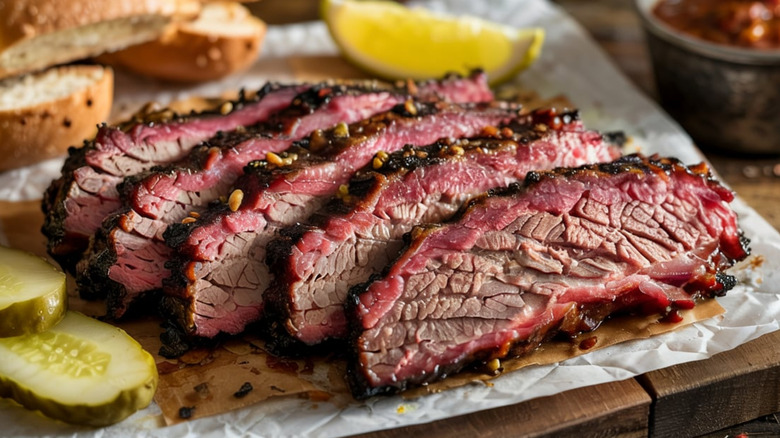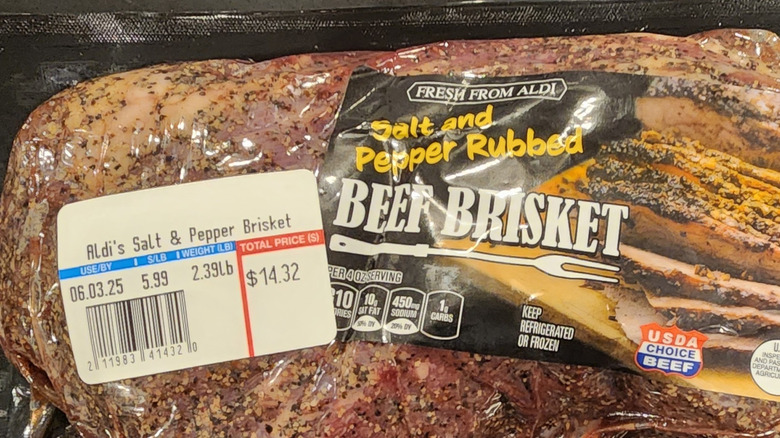Why Aldi's Brisket Is Ideal For First-Time Meat Smokers
I don't care what anyone says, manning the grill can be intimidating. Heck, trying to choose the right cut of meat is a task in and of itself, especially if you go with a huge chunk like brisket, which, by the way, has a reputation for being difficult. Then, when it doesn't turn out like everyone expected — juicy, tender, and with a beautiful bark on the outside — all eyes are on you, and not in a good way. Thankfully, Aldi's brisket helps bridge that gap because it's inexpensive, widely available, and in many cases already seasoned. Some of their briskets come pre-rubbed with simple blends like salt and pepper, or Texas-style barbecue seasoning, which means the heavy lifting of creating a flavorful bark is partly handled before the smoker is even fired up.
Another advantage is size; many Aldi briskets are smaller than the massive "packer" cuts sold in butcher shops, which significantly reduces smoking time. Smaller briskets give you the freedom not to have to hover over a firebox for 12 hours on your first try, and you won't have to buy as much wood or charcoal. The more manageable size also means that if mistakes happen — like drying out the flat or failing to push past the stall — the lesson comes without a huge financial loss. That makes it easier for first-time smokers to focus on mastering temperature control, smoke quality, and timing.
You'll already have a ton of questions, like, what's the best wood for smoking brisket in the first place? If there's anything you can take off your plate to make your first time smoking meat enjoyable, go for it. For beginners, Aldi brisket provides a training ground that balances affordability, convenience, and flavor potential.
How to get the most out of an Aldi brisket
Since you may not know the brisket cut for the best barbecue, it helps to have a starter pack, but remember that buying a brisket from Aldi is not a guaranteed shortcut to great barbecue. It does, however, offer plenty of opportunity to learn the craft when handled correctly. Because these briskets are budget-friendly, the marbling isn't always as rich as higher-graded beef, which makes technique especially important. Your goal is to manage smoke and heat so the meat stays moist; keeping the smoker steady between 225°F to 250°F allows collagen to break down gradually, while wrapping the brisket during the stall helps lock in juices. Even if it comes pre-seasoned, adding a light coat of extra spices (or simply boosting the salt and pepper) can help build a crust that stands up to hours of smoke.
Since smaller briskets cook more quickly, pay close attention to internal temperature by using a probe thermometer to ensure you catch the moment it reaches ideal doneness, which is around 200°F in the thickest part of the flat. Resting afterward is non-negotiable; even an inexpensive brisket benefits from an hour or more of rest so the juices redistribute. Wood choice should also be considered, as there is no one right answer to the best type of wood to use for smoking brisket. Strong woods like mesquite can overpower leaner brisket, while oak or applewood bring a balanced flavor that pairs better with Aldi's cuts. Taken together, these adjustments maximize what Aldi brisket brings to the table. Give yourself a little grace, and dig in.


